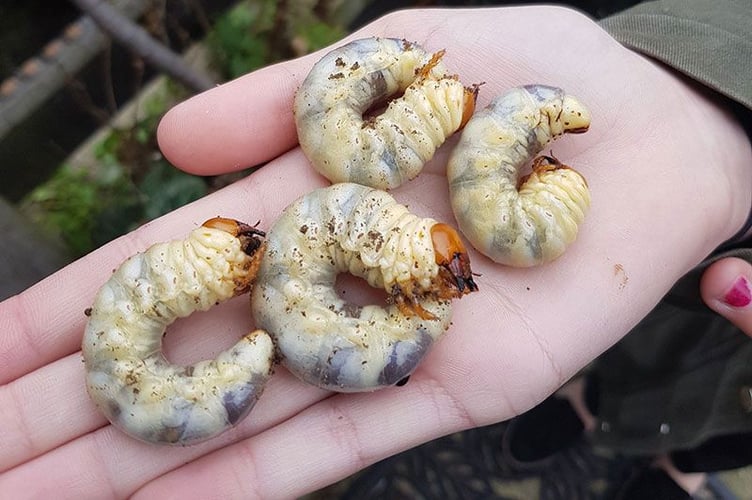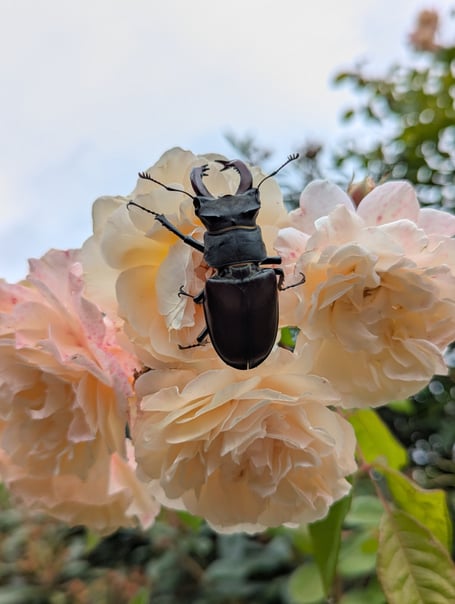
Have you seen any stag beetles this summer? They are magnificent creatures – once seen, never forgotten!
About this time last year, following my Out & About feature about these majestic insects, several readers emailed me to report their stag beetle sightings and share their photos. Sadly I’ve not heard of any being spotted this year.
Stag beetle populations have been declining across much of Europe and have become extinct in many parts. In the UK, they are rarely seen outside of the southern counties of England, including London.
The British public is being asked to keep an eye out for stag beetles this summer and record any sightings online, as part of a national Great Stag Hunt survey conducted by the wildlife charity People’s Trust for Endangered Species (PTES).
The UK’s largest beetle, stag beetles are unmistakable with their large, antler-like mandibles (jaws). Males are especially impressive as they can grow up to 75mm in length, are shiny black with chestnut wing cases and are most often seen flying looking for mates.
Females are slightly smaller, between 30-50mm in length, and have smaller mandibles. Usually, they’re seen on the ground looking for somewhere to lay their eggs, which hatch into larvae that feed on dead wood, so they don't pose a risk to living trees or shrubs.
PTES has been collecting data on stag beetles since 1998 and says the data is vital for conservationists to understand where stag beetles remain, where they’re no longer living and what the impact of climate change might be on populations.
David Wembridge, PTES conservation research and strategy officer, said: “Stag beetles are fascinating, spending most of their lives – three to five years – underground before emerging as adults in search of a mate.
“Unfortunately, their populations are under threat due to the loss of deadwood habitats from gardens, parks and woodlands, which are essential habitats for their life cycle. Taking part in the Great Stag Hunt is a simple but powerful way for people to help us understand and conserve these incredible insects.
“In urban areas, stag beetles are vulnerable to traffic and footfall as they bask on warm tarmac surfaces. That’s why it’s important to ensure we leave space for stag beetles and other wildlife in our towns and cities.”
Last year, thousands of volunteers took part in the Great Stag Hunt, submitting 15,000 records of stag beetles. The top three county locations for stag beetle sightings were Hampshire where over 2,600 were recorded, followed by Greater London with over 2,100. Surrey was in third place with 1,755 recorded.
PTES would like residents to report sightings in Surrey and also elsewhere in Britain when we travel. Sightings in unexpected regions help scientists build a national picture of how stag beetles are faring.
So, keep your eyes peeled, whether you’re out for a walk, commuting, walking your dog or heading to the shops.
Free online beetle ID guides are available to help you recognise a stag beetle compared to other insects, such as the lesser stag beetle – the stag beetle’s smaller cousin. To download these and to record any stag beetles (male, female, or larvae) you see, visit stagbeetles.ptes.org.
If you’re not sure what you’ve seen, submit a photo; PTES will verify your sighting.
I’d also be interested in your sightings: please get in touch via [email protected]





Comments
This article has no comments yet. Be the first to leave a comment.